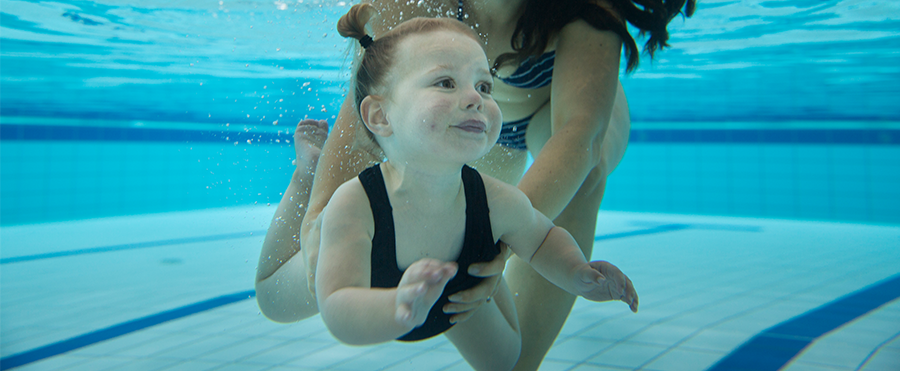Please ensure you have a safe space when engaging with these activities at home. Active adult supervision is advised at all times.
Before you begin practicing this exercise, make sure your child is comfortable with submerging their face in the water. Refer to our activity sheets on Blowing Bubbles, and Readiness for Submerging your Face in the Water.
One of the fundamental skills we teach our little ones is breath control. This is a key part in helping infants becoming familiar with water in any environment, including at home. It also helps prepare children before their first time submerging their face or head in the water.
Once children are confident putting their face in the water, it is important to develop extended breath control. This means children will be able to swim underwater for longer periods in a way that is safer and more comfortable.
Skills – Help your child learn extended breath control
These skills are suitable for kids aged 3+ years old
Once your child is comfortable having their face in the water, you can move on to this counting activity at bath time to develop extended breath control. You can also switch this activity up by reciting the alphabet and asking children to put their face under the water until they reach specific letters.
- Using the bath at home, have children lay on their tummy.
The water in the bath should be at a level where children are comfortably able to keep their head above water, but should cover their ears when they put their face in the water. - While the child has their head out of the water count to 10 together
- Ask your child to put their face under the water until as you count the number one
Remember, the child should be blowing bubbles while their face is in the water - If they are comfortable, ask your child to put their face in the water until you count to two
- Repeat step four, increasing the count one at a time until you reach 10. Before each submersion, ensure your child is comfortable.
Tip/Trick – Let the children be in control by asking leading questions: “What number can you reach?”
Once children reach a certain level of time they are comfortably submerged in the water, let your teacher know so they can work at this level in class.
Benefits of learning extended breath control
- Easily incorporated into daily bath or shower routine
- Parents will also develop a better understanding of their child’s breath holding capacity during this activity
- May reduce trauma or panic in the event of an accidental submersion
- Allows children to begin the early stages of independent swimming
- Builds confidence and self-awareness when in the water.
Extension
As your child gains confidence in the water and is able to achieve extended breath control, this extension will help them prepare for independence in the water. Instead of lying flat in the bath, have children support themselves in the water as they practice this exercise.
- Gradually increase the amount of water in the bath
- Children put their hands on the bottom of the bath so their chin is on the surface of the water
- Once hands are on the bottom of the bath and chin is in the water the hips and legs will naturally become buoyant in the water and rise towards the surface of the water
- Ask the child to put their face into the water for a specified amount of time
Remember, the child should be blowing bubbles while their face is in the water.




